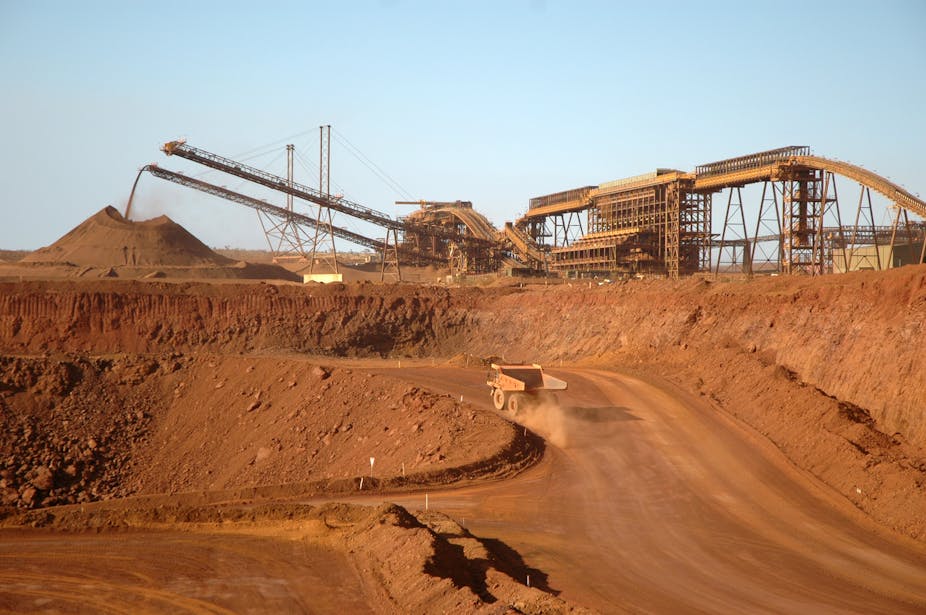It is often difficult to ascertain how the location or culture that you live within is perceived by others, but travelling to other parts of Australia or indeed the world as a Western Australian it’s usually clear – Western Australia is where the mining is.
You get the impression people see the state is one great mine site, the Kalgoorlie Super Pit on growth hormones. A huge gaping hole on one side of the country filled with giant-sized Tonka trucks and an army of men in hi-vis gear, everyone rolling in the proceeds of the boom.
Arriving at the Perth airport with all the FIFO transfers only reinforces that idea. And this year’s Perth Writers Festival program might have too.
The 2014 Perth Writers Festival, which took place over three days last month at the University of Western Australia, featured six specific sessions devoted to writing and mining.
While a number dealt with non-fiction writing or discussed the economic inevitability of bust, one panel, Boomtown Rats, explored the possibilities that this world of mining presents to the fiction writer.
Alan Carter, Robert Schofield and David Whish-Wilson – all local novelists – drew on their experiences within mining communities to create crime novels that demonstrate the complex culture of a mine site and the unique characters that offer themselves perfectly to the genre.
The world of mining is dominated by larger-than-life personalities, men of risk (and Gina) whose bold pursuits occupy the media’s attention. Whichever boom or rush that we choose to consider these figures emerge immediately and are surrounded by myths or scandals, and occasionally a few lasting achievements.
Such personalities might be fertile ground for historians and biographers but it is the everyday figures of mining life that offer themselves to the crime writer. These figures are no less affected by the ambition, lust, greed and betrayal that is immediately associated with the mining barons – but it is their peripheral position, both geographically and socially, that offers the crime writer narrative possibilities.
This recent group of local crime writers are not the first novelists to see the creative potential of a mining narrative.
Katherine Susannah Prichard’s Golden Miles and Randolph Stow’s Tourmaline are both critical works in defining a Western Australian mining literature. There are endless titles from the 1890s onwards, often published locally, that tell the tales of entombed miners, goldfield romances, ghost towns, legendary finds and corrupt officials.
This is not a field of literature, however, that remains in the zeitgeist. Just like the boom and bust cycles of the industry, writing about mining tends to move in and out of the collective imagination. Many titles are now only found in second-hand bookstores, stories left to ruin like the old mine headframes above mining leases long forgotten.
So as talk of bust begins to dominate the discussion of the boom, what will be the future for writing set in the world of mining?
As the Boomtown Rats panellists all articulated the boom/ bust paradox might be an economic consideration but the stories of the location will still fascinate, particularly within the crime genre.
While the boom has meant economic freedom for many, the two-speed economy that results from this situation means a position of vulnerability for many.
Higher cost of living, levels of debt, incarceration and homelessness are the alternative boom that Western Australia has also been witnessing – and these stories are just as intriguing.
The crime novels written by Alan Carter, Robert Schofield and David Whish-Wilson are not stories of investment and economic prosperity. They explore police corruption, injustice, dysfunctional relationships and exposure, as well as looking to historical contexts other than this current boom. So while the industry might face hard times, the narrative potential remains.
The question remains, however, will there be a continuing market to publish mining-based narratives without the media attention of the boom?
Earlier periods of Western Australian mining prosperity have resulted in large social state-based projects such as the Mundaring Weir, the Kalgoorlie pipeline, the Wheatbelt rail network, Fremantle harbour. In Norway, there has been significant state-based investments of the country’s oil profits, particularly arts and education funding.
Despite the recent gift of A$65 million by Andrew “Twiggy” Forrest to the University of Western Australia for research projects, the boom has not resulted in large amounts of flow-on funding for the arts.
So while intriguing stories of mining lives and locations are a limitless resource, whether they will keep being written and published is a matter of pure speculation.

